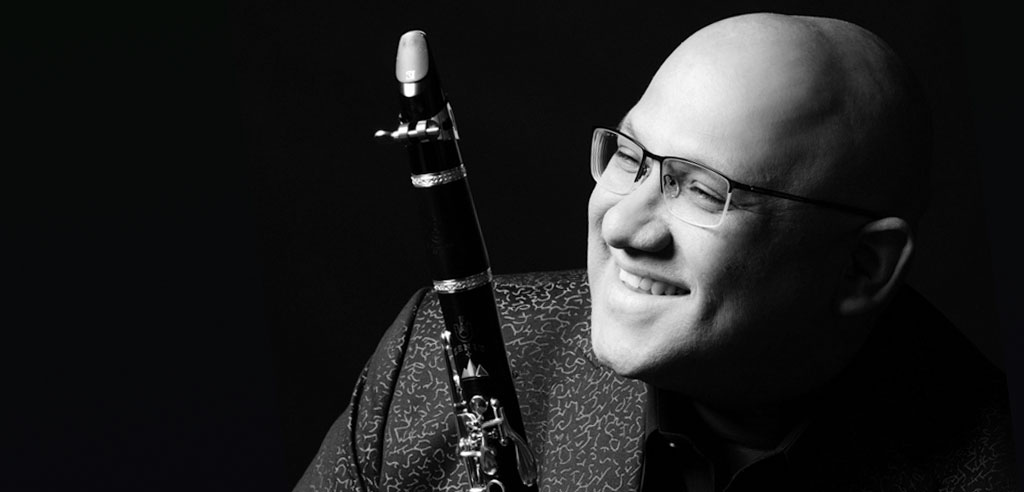SOLD OUT!
The Helena Symphony continues its 65th Season on Saturday, November 16 at 7:30 p.m. in St. Paul’s United Methodist Church with a special Mozart By Candlelight concert. The concert features three of Mozart’s most famous works along with Clarinetist Ricardo Morales, who has been proclaimed the greatest living clarinetist in the world today.
“No other composer has mastered every musical form as Wolfgang Amadeus Mozart did, and done so with such ease,” explains Music Director Allan R. Scott. “For him, it seemed to be a nuisance to transcribe his musical thoughts onto paper. Mozart would develop and achieve perfection in his imagination before his hand ever began to write. Whereas most composers, even the great Beethoven, would go through countless drafts and revisions before completing a work, Mozart’s first draft was his final draft.”
As a child prodigy, Mozart was immediately recognized as an unprecedented musical genius. Under his father’s tutelage, the young Mozart became a virtuoso performer on the keyboard and violin. By the age of eight, he had composed his first symphony and had toured most of Europe, performing for dignitaries, royalty, and prominent composers of the day, who were simply awed by the youth’s abilities and musical imagination.
During his brief 36 years, Mozart composed well over 600 works. The three works performed by the Helena Symphony Orchestra are some of Mozart’s final works and some of his greatest achievements. Mozart composed an instant hit with The Magic Flute which he wrote the Overture just a few days before the first performance and not surprisingly it is one of the finest orchestral works of the 18th century. Mozart hints at the opposition of light and darkness, the testing of an initiate seeking enlightenment, the commands to fasting and silence – which form both the plot of The Magic Flute and the Masonic doctrine Mozart knew.
Mozart wrote most of his concertos for his own performances, but one of his final works was composed for his dear friend and clarinetist Anton Stadler (1753-1812). After he met Stadler, Mozart realized that the rich sounds and voice-like qualities of the clarinet would make for solo instrument in a concerto. Composed shortly after The Magic Flute, the Clarinet Concerto and Mozart’s final opera share a combined simplicity yet sophistication that was becoming the composer’s hallmark style in his last few years. The Clarinet Concerto alone reveals an artistry of Mozart that surpasses many of his other brilliant works.
Mozart’s last three symphonies (39, 40, and 41) appeared in quick succession during the summer of 1788. While Mozart was somewhat of a celebrity at times during his life, particularly in Prague, his music went in and out of favorability in Vienna. During the late 1780’s Viennese society had “dropped” Mozart completely as a pianist and composer, leaving him in dire financial troubles. Mozart’s last three symphonies may perhaps have been the composer’s last vain attempt to gain another foothold in the cultural life of Vienna.
Mozart’s last symphony, Symphony No. 41, along with Symphonies 39 and 40, remains one of the great mysteries about Mozart and his works. Ironically, Mozart’s last three symphonies are more of a mystery than his final work – his
Requiem. The most provocative fact that Mozart probably never heard them is now believed to be untrue. The idea that Mozart composed these works with no plans for a performance is also doubtful. While no facts remain of the first performance of these works with Mozart present, it is fairly certain that a performance had to have taken place. The Symphonies were actually published two years after Mozart’s death, thereby adding to the legend that the composer never heard them in his lifetime.
Mozart did not expect Symphony No. 41 to be his last nor did he add the title Jupiter to the work. The title of Jupiter Symphony appeared in 1819 when London violinist and concert promoter Johann Peter Salomon gave the work its nickname after the most powerful of Roman gods. Salomon’s nickname of Mozart’s final symphony was probably suggested because he and the English-speaking world were responding to the majesty and nobility of the first movement, which includes the brilliant sound of trumpets and timpani along with stately dotted rhythmic figures in the opening moments (also the key of the work, C major, was the traditional key for ceremonial music in the 18th century). “Mozart may not have known his Symphony No. 41 would bring his own symphonic career to an end, but he could not have found a more spectacular and fitting way to crown his achievement, all the while, to point the way to the future,” suggests Maestro Scott.
Making his debut with the Helena Symphony, Ricardo Morales is one of the most sought-after clarinetists of today. He joined The Philadelphia Orchestra as principal clarinet in 2003 and made his solo debut with the Orchestra in 2004. He previously served as principal clarinetist of the Metropolitan Opera Orchestra, where, during his tenure with the Met Orchestra, he appeared as a soloist at Carnegie Hall and on two European tours. Mr. Morales has also been a featured soloist with the Chicago Symphony, Cincinnati Symphony, Indianapolis Symphony, Seoul Philharmonic, Columbus Symphony, Memphis Symphony, and the Flemish Radio Symphony.
Mr. Morales has been invited to serve as principal clarinet for the world’s leading orchestras, including the New York Philharmonic, Chicago Symphony Orchestra, and Berlin Philharmonic. An active chamber musician, he has performed at the Santa Fe Chamber Music Festival, the Philadelphia Chamber Music Society, the Seattle Chamber Music Summer Festival, and with the Chamber Music Society of Lincoln Center. Mr. Morales’ debut solo recording, French Portraits, is available on the Boston Records label, and his recent recordings include performances with the Kalichstein-Laredo-Robinson Trio, a Latin Grammy-nominated release with the Pacifica Quartet, and Mozart’s Clarinet Concerto with the Mito Chamber Orchestra (Japan).
This special Non-Series Concert will be presented in the excellent acoustical setting of St. Paul’s United Methodist Church and with the intimacy of a candlelight setting. “The venue allows for a unique candlelight concert. All available tickets have been sold, which is very exciting from a production standpoint,” says Director of Patron Services Scott Kall.
Even though the concert has already sold out, those who are still interested in obtaining tickets can be put on a waiting list by calling the Symphony Box Office (406.442.1860), or visiting the Symphony Box Office located on the Walking Mall at the Livestock Building (2 N. Last Chance Gulch, Suite 1) between 10 a.m. and 4 p.m. Any tickets that might become available will be distributed on a first-come, first-served basis from that list.

